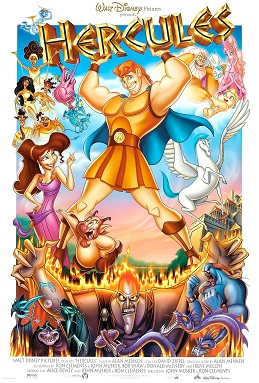
Hercules is a 1997 American animated musical fantasy comedy film produced by Walt Disney Feature Animation for Walt Disney Pictures. It is loosely based on the legendary hero Heracles, a son of Zeus in Greek mythology. The film was directed by John Musker and Ron Clements, both of whom also produced the film with Alice Dewey Goldstone. The screenplay was written by Clements, Musker, Donald McEnery, Bob Shaw, and Irene Mecchi. Featuring the voices of Tate Donovan, Danny DeVito, James Woods, and Susan Egan, the film follows the titular Hercules, a demigod with super-strength raised among mortals, who must learn to become a true hero in order to earn back his godhood and place in Mount Olympus, while his evil uncle Hades plots his downfall.

An independent film, independent movie, indie film, or indie movie is a feature film or short film that is produced outside the major film studio system in addition to being produced and distributed by independent entertainment companies. Independent films are sometimes distinguishable by their content and style and how the filmmakers' artistic vision is realized. Sometimes, independent films are made with considerably lower budgets than major studio films.

Anthony David Leighton Scott was an English film director and producer. He made his theatrical film debut with The Hunger (1983) and went on to direct highly successful action and thriller films such as Top Gun (1986), Beverly Hills Cop II (1987), Days of Thunder (1990), The Last Boy Scout (1991), Crimson Tide (1995), Enemy of the State (1998), Man on Fire (2004), Déjà Vu (2006), and Unstoppable (2010).

Clash of the Titans is a 1981 epic fantasy adventure film directed by Desmond Davis and written by Beverley Cross, loosely based on the Greek myth of Perseus. Starring Harry Hamlin, Judi Bowker, Burgess Meredith, Maggie Smith and Laurence Olivier, the film features the final work of stop-motion visual effects artist Ray Harryhausen.
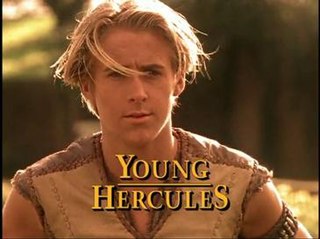
Young Hercules is a prequel series to the television series Hercules: The Legendary Journeys that originally aired on Fox Kids Network. It premiered on September 12, 1998 and ended on May 14, 1999, with a total of 50 episodes over the course of 1 season. It stars Ryan Gosling in the title role, who took over for Ian Bohen who starred in the pilot movie and four episodes of Hercules: The Legendary Journeys. The series was inspired by the Greek myths of Heracles.
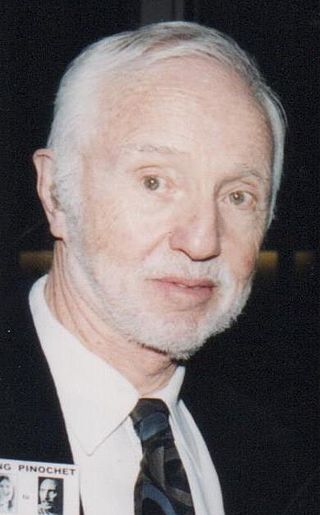
Haskell Wexler was an American cinematographer, film producer, and director. Wexler was judged to be one of film history's ten most influential cinematographers in a survey of the members of the International Cinematographers Guild. He won the Academy Award for Best Cinematography twice, in 1966 and 1976, out of five nominations. In his obituary in The New York Times, Wexler is described as being "renowned as one of the most inventive cinematographers in Hollywood."

Francis Lawrence is an American filmmaker and producer. After establishing himself as a director of music videos and commercials, Lawrence made his feature-length directorial debut with the superhero thriller Constantine (2005) and has since directed the post-apocalyptic horror film I Am Legend (2007), the romantic drama Water for Elephants (2011), four of the five films in The Hunger Games film series, and the spy thriller Red Sparrow (2018).
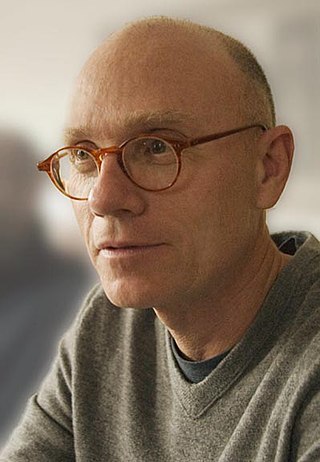
Jean de Segonzac is an American director, screenwriter and cinematographer who has worked in documentaries and television programs. Most of his work has been in gritty, cinéma vérité-style law enforcement TV dramas.

Mt. Olympus is a neighborhood in the Hollywood Hills area of the city of Los Angeles, California. Considered a subdistrict of Laurel Canyon, the 300-acre (120 ha) neighborhood is known for its upscale housing and wide streets. Mt. Olympus can be reached by taking Laurel Canyon Blvd. to Mt. Olympus Drive.

Clash of the Titans is a 2010 action fantasy film and remake of the 1981 film of the same name produced by Metro-Goldwyn-Mayer. The story is very loosely based on the Greek myth of Perseus. An Australian-American production directed by Louis Leterrier from a screenplay by Travis Beacham, Phil Hay, and Matt Manfredi, starring Sam Worthington, Gemma Arterton, Mads Mikkelsen, Alexa Davalos, Ralph Fiennes, and Liam Neeson, the film was originally set for standard release on March 26, 2010. However, it was later announced that the film would be converted to 3D and was released on April 2, 2010.

Immortals is a 2011 American fantasy action film directed by Tarsem Singh Dhandwar and starring Henry Cavill, Stephen Dorff, Luke Evans, John Hurt, Isabel Lucas, Kellan Lutz, Freida Pinto, Joseph Morgan, Daniel Sharman, and Mickey Rourke. Loosely based on the Greek myths of Theseus and the Minotaur, and the Titanomachy, The film was previously named Dawn of War and War of the Gods before being officially named Immortals.

Jay Robert Jennings is an American independent filmmaker and author. He has directed two feature films, Loanshark (1999) and Hell to Pay (2014), as well as, an assortment of short films and documentaries. Jennings uses handheld cameras and cinéma vérité techniques, shooting his films among old Hollywood buildings and streets.

Drive is a 2011 American action drama film directed by Nicolas Winding Refn. The screenplay, written by Hossein Amini, is based on James Sallis's 2005 novel of the same name. The film stars Ryan Gosling as an unnamed Hollywood stunt driver who moonlights as a getaway driver. He quickly grows fond of his neighbor, Irene, and her young son, Benicio. When her debt-ridden husband, Standard, is released from prison, the two men take part in what turns out to be a botched million-dollar heist that endangers the lives of everyone involved. The film co-stars Bryan Cranston, Christina Hendricks, Ron Perlman, and Albert Brooks.

Wrath of the Titans is a 2012 American-Spanish action fantasy film and a sequel to the 2010 film Clash of the Titans. The film stars Sam Worthington, Rosamund Pike, Bill Nighy, Édgar Ramírez, Toby Kebbell, Danny Huston, Ralph Fiennes, and Liam Neeson, with Jonathan Liebesman directing a screenplay by Dan Mazeau and David Leslie Johnson from a story by them and Greg Berlanti. Wrath of the Titans takes place a decade after the events of the preceding film as the gods lose control over the imprisoned Titans and Perseus is called, this time to rescue his father Zeus, overthrow the Titans, and save mankind.
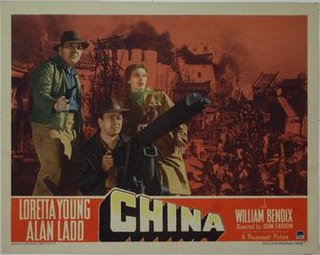
China is a 1943 film directed by John Farrow and starring Loretta Young, Alan Ladd and William Bendix. Ladd's character David Llewellyn Jones, wearing a fedora, a leather jacket, khakis and a beard stubble, was an inspiration for Indiana Jones. Aside from Tala Birell as one of Jones' paramours at the beginning of the film, the entire supporting cast is Asian, including Philip Ahn and Richard Loo.

James Georgopoulos is a Greek-American visual artist. Georgopoulos works with painting, sculpture, and video installation to address a relationship between highly skilled production techniques, pop culture, and taboo iconography. His work is in various collections, including the Panavision USA Collection. He lives and works in Venice, California.

San Andreas is a 2015 American disaster film directed by Brad Peyton and written by Carlton Cuse, with Andre Fabrizio and Jeremy Passmore receiving story credit. The film stars Dwayne Johnson in the lead role, with Carla Gugino, Alexandra Daddario, Ioan Gruffudd, Archie Panjabi and Paul Giamatti. Its plot centers on a massive earthquake caused by the San Andreas Fault, devastating the West Coast of the United States.
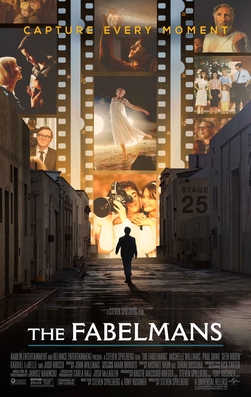
The Fabelmans is a 2022 American semi-autobiographical coming-of-age drama film directed and co-produced by Steven Spielberg, who co-wrote the screenplay with Tony Kushner. Loosely based on Spielberg's adolescence and first years as a filmmaker, the plot is told through an original story of the fictional Sammy Fabelman, a young aspiring filmmaker who explores how the power of films can help him see the truth about his dysfunctional family and those around him. It stars Gabriel LaBelle as Sammy, alongside Michelle Williams, Paul Dano, Seth Rogen, and Judd Hirsch in supporting roles. The film is dedicated to the memories of Spielberg's real-life parents, Leah Adler and Arnold Spielberg, who died in 2017 and 2020, respectively.

Gabriel LaBelle is a Canadian actor. He is best known for his leading role as young aspiring filmmaker Sammy Fabelman in Steven Spielberg's semi-autobiographical film The Fabelmans (2022), for which he received acclaim and won the Critics' Choice Movie Award for Best Young Performer.



















